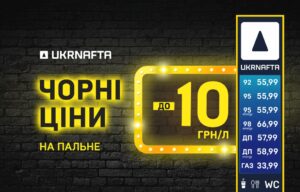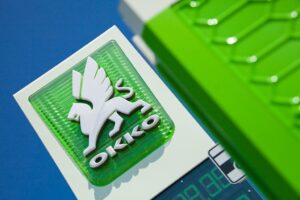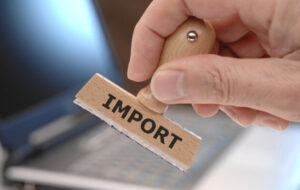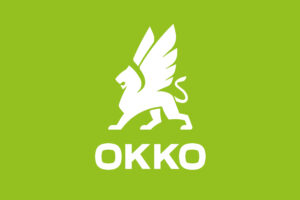
On Thursday and Friday, November 27 and 28, 2025, all customers can refuel their cars at the gas stations of Ukraine’s largest network, UKRNAFTA, at the most favorable price.
Base prices for these two days have already been reduced:
• A92 — 55.99 UAH/l;
• A95 — 55.99 UAH/l;
• A95 Energy — 55.99 UAH/l;
• A98 Energy — 66.99 UAH/l;
• DP — 57.99 UAH/l;
• DP Energy — 58.99 UAH/l;
• LPG — 33.99 UAH/l.
When purchasing fuel through the UKRNAFTA app wallet, the following additional discounts apply:
• −2.5 UAH/l when purchasing gasoline and diesel fuel;
• −0.5 UAH/l on LPG.
You can also refuel with gasoline and get -10 UAH/l:
• −2 UAH/l — when using the UKRNAFTA app;
• −1 UAH/l — when refueling 20 l or more and purchasing winter washer fluid;
• −1 UAH/l — when refueling 20 l or more and purchasing a hot dog;
• −2 UAH/l — when refueling 40 l or more (25–40 l: −1 UAH/l)
• −2 UAH/l — when paying with a Mastercard from OTP Bank;
• −2 UAH/l — additional bonuses from partners: Nova Poshta, YasnoLove, Vodafone.
That is, if a UKRNAFTA customer fills up with 40 liters of gasoline, enjoys a hot dog, purchases a high-quality winter windshield washer fluid, collects a partner bonus, scans the app, and pays with a Mastercard from OTP Bank, they will receive a discount of 10 UAH/liter.
We invite everyone to UKRNAFTA — the most affordable gas station chain near you!
JSC Ukrnafta is Ukraine’s largest oil production company and the operator of the largest national gas station chain, UKRNAFTA. In 2024, the company entered into asset management with Glusco. In 2025, it completed an agreement with Shell Overseas Investments BV to purchase the Shell network in Ukraine. In total, it operates 662 gas stations.
The company is implementing a comprehensive program to restore operations and update the format of its network of gas stations. Since February 2023, it has been issuing its own fuel vouchers and NAFTAKarta cards, which are sold to legal entities and individuals through Ukrnafta-Postach LLC.
The largest shareholder of Ukrnafta is Naftogaz of Ukraine with a 50%+1 share.
In November 2022, the Supreme Commander-in-Chief of the Armed Forces of Ukraine decided to transfer to the state the corporate rights of the company that belonged to private owners, which is now managed by the Ministry of Defense.

Starting November 24, Ukraine’s largest chain of gas stations, UKRNAFTA, is launching a new round of fuel discounts, allowing customers to save up to 9 UAH per liter of gasoline when combining promotional offers, according to a company statement.
According to the press release, a basic discount of UAH 2/liter is provided when using the UKRNAFTA mobile app. Additionally, customers can receive:
a discount of 1 UAH/liter when refueling 20 liters or more and purchasing coffee;
a discount of 1 UAH/liter when refueling 20 liters or more and purchasing winter windshield washer fluid;
a discount of 1 UAH/liter when refueling 20 liters or more and purchasing a hot dog;
a discount of 2 UAH/liter when refueling 40 liters or more (a discount of 1 UAH/liter applies to volumes of 25–40 liters);
up to a discount of 2 UAH/liter – additional discounts from partners (Nova Poshta, Ukrzaliznytsia, YasnoLove, Vodafone).
The company specifies that when all promotions are combined, the total savings reach 9 UAH per liter of gasoline. In addition, when paying with a UKRSIBBANK World Elite card, the total savings on gasoline and diesel fuel can be up to 10 UAH/liter.
In addition to fuel discounts, until the end of November, the chain is running a promotion with a 50% discount on burgers and vitamin teas in cafes at UKRNAFTA gas stations.
JSC Ukrnafta is Ukraine’s largest oil production company and the operator of the largest national gas station chain, UKRNAFTA. In 2024, the company took over the management of Glusco’s assets. In 2025, it completed an agreement with Shell Overseas Investments BV to purchase the Shell network in Ukraine. In total, it operates 662 gas stations.
The company is implementing a comprehensive program to restore operations and upgrade the format of its network of gas stations. Since February 2023, it has been issuing its own fuel vouchers and NAFTAKarta cards, which are sold to legal entities and individuals through Ukrnafta-Postach LLC.
The largest shareholder of Ukrnafta is Naftogaz of Ukraine with a 50%+1 share.
In November 2022, the Supreme Commander-in-Chief of the Armed Forces of Ukraine decided to transfer the company’s corporate rights, which belonged to private owners, to the state, and they are now managed by the Ministry of Defense.

Demand for motor fuel during large-scale power outages may increase by 10-20%, and the fuel market is fully prepared for this, according to Yuriy Kuchabsky, OKKO’s vice president of procurement, wholesale sales, and new business.
“If there is a blackout, we are prepared. We estimate that there may be a 10-20% jump in fuel sales. The market will cope with this very easily,” he said during the “Energy that keeps Ukraine going” forum organized by RBC-Ukraine, which was recently held in Kyiv.
According to him, the reason to expect the market to be ready for surges in demand is primarily that it is not monopolized and has been tempered by various trials, including the loss of supplies from Russia with the start of a full-scale invasion, power outages, and Russian strikes on the Kremenchug oil refinery and oil depots.
“There was a test of endurance at the beginning of the summer when the Kremenchug oil refinery was bombed and it effectively disappeared from the market in a single day. In the same month, the number of importers increased sharply, by about 50 companies. And there was no shortage, the market was flooded. So there will be no disaster now either. The market has also learned to operate without oil depots so as not to create additional targets for the enemy,” Kuchabsky explained.
OKKO Group brings together more than 10 diverse businesses in the fields of manufacturing, trade, construction, insurance, services, and other services. The group’s flagship company is Halnaftogaz, which operates one of the largest gas station chains in Ukraine under the OKKO brand, with nearly 400 gas stations.
The founder and ultimate beneficiary of the group is Vitaliy Antonov.

In January-September 2025, Ukraine increased its imports of petroleum products by 3% (166,823 thousand tons) compared to the same period last year, to 5 million 665,761 thousand tons.
According to the State Customs Service, petroleum products were imported in the amount of $4 billion 566.46 million, which is 11.1% less than in the first nine months of 2024 ($5 billion 133.869 million).
Fuel worth $695.185 million was imported from Poland (15.22% share), Greece – $595.812 million (13.05%), Lithuania – $569.152 million (12.46%), other countries – $2 billion 706.311 million (59.26%).
As reported, Ukraine imported 7 million 562.556 thousand tons of petroleum products in 2024, which is 1.1% less than in 2023 (7 million 646.537 thousand tons).

The Plus program, which the UKRNAFTA filling station network implements jointly with the Ministry of Defense of Ukraine within the Army+ application, demonstrates stable efficiency and real support for the military.
Since the start of the project in December 2024, the military has refueled 13.3 million liters of fuel. The savings amounted to UAH 36.1 million. Another UAH 4.2 million was saved on cafe products and UAH 707.9 thousand on goods in the stores at the filling stations. In total, almost 100,000 military personnel have already taken advantage of the special discounts.
We remind you of the discounts for the military with Army+ at UKRNAFTA filling stations:
* -3 UAH/l for gasoline and diesel (up to 200 liters per month)
* UAH 0.5/l for liquefied gas (up to 200 liters per month)
* -30% for cafe products
* -10% for goods in stores (except for alcohol, tobacco and promotional goods, up to 2000 UAH/month).
UKRNAFTA consistently provides special service conditions for the defenders of Ukraine. The company thanks everyone who serves and continues to support the military every kilometer of their journey.
“Ukrnafta is the largest oil company in Ukraine and the operator of the national network of filling stations. In March 2024, the company took over management of Glusco’s assets and operates 545 filling stations – 461 owned and 84 managed.
The company is implementing a comprehensive program to restore operations and update the format of its filling stations. Since February 2023, the company has been issuing its own fuel coupons and NAFTAKarta cards, which are sold to legal entities and individuals through Ukrnafta-Postach LLC.
Ukrnafta’s largest shareholder is Naftogaz of Ukraine with a 50%+1 share.
In November 2022, the Supreme Commander-in-Chief of the Armed Forces of Ukraine decided to transfer to the state a share of corporate rights of the company owned by private owners, which is now managed by the Ministry of Defense.

The OKKO filling station network currently occupies about 19% of the Ukrainian retail fuel market, said Vasyl Danylyak, CEO of the company.
“This is when we count the entire market, both black and gray, when everything is together, we operate with such figures,” he said in an interview with the Careerist YouTube channel.
According to Danyliak, OKKO currently ranks first in terms of market share in Ukraine, its gap with the second place, represented by WOG, is about 5 percentage points.
The CEO of OKKO also said that the group’s turnover in 2023 amounted to $2.4 billion, and EBITDA – $240 million.
“These are petroleum product retail, non-fuel business, wholesale, agro-trading, agro-financing, trade in mineral fertilizers, natural gas and electricity,” he said.
As reported, by the end of 2022, Danyliak estimated OKKO’s fuel sales market share at 25%, up 7 percentage points from 2021,
OKKO filling stations network is a part of OKKO Group. It is one of the largest filling station chains in Ukraine, with about 400 filling stations.
OKKO Group unites more than 10 diversified businesses in production, trade, construction, insurance, maintenance and other services. OKKO-Agrotrade division and Khlibprom concern operate in agriculture. The flagship company of the group is Galnaftogaz, which operates one of the largest filling stations in Ukraine under the OKKO brand.
The company’s majority shareholder is Vitaly Antonov. Minority shareholders include the European Bank for Reconstruction and Development (EBRD).